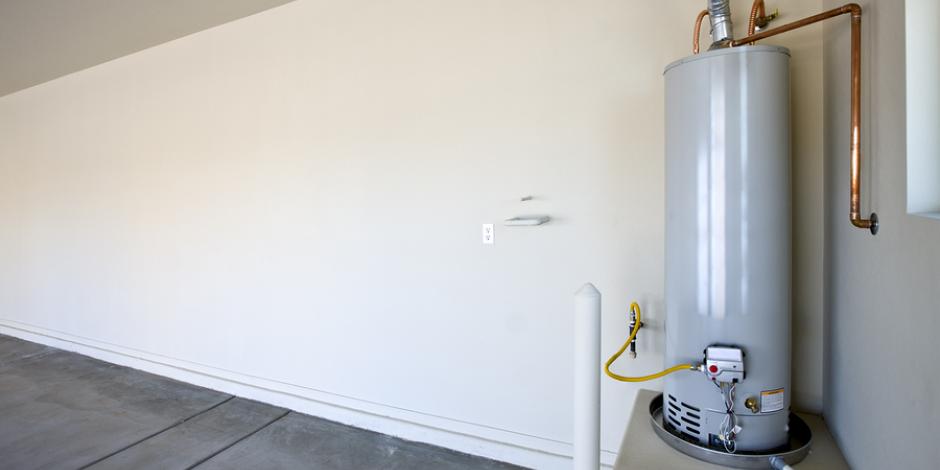Do you find yourself on the lookout for critical information concerning What Kind of Maintenance Do Water Heaters Need??

Warm water is necessary for everyday convenience, whether it's for a refreshing shower or washing recipes. To ensure your warm water system runs effectively and lasts much longer, regular upkeep is key. This write-up offers practical ideas and understandings on how to preserve your home's warm water system to avoid disturbances and costly fixings.
Introduction
Preserving your home's warm water system might seem difficult, but with a couple of basic actions, you can ensure it runs smoothly for many years ahead. This guide covers every little thing from understanding your warm water system to DIY maintenance pointers and knowing when to employ expert assistance.
Importance of Preserving Your Warm Water System
Regular upkeep not just extends the life expectancy of your warm water system but likewise guarantees it operates effectively. Disregarding upkeep can lead to reduced efficiency, higher power bills, and even early failing of the system.
Signs Your Hot Water System Demands Upkeep
Knowing when your hot water system requires focus can prevent major concerns. Keep an eye out for signs such as inconsistent water temperature level, unusual sounds from the heating system, or rusty water.
Understanding Your Hot Water System
Prior to diving right into upkeep tasks, it's useful to comprehend the fundamental parts of your warm water system. Generally, this includes the water heater itself, pipelines, anode poles, and temperature level controls.
Monthly Upkeep Tasks
Normal regular monthly checks can help capture minor issues prior to they rise.
Purging the Hot Water Heater
Flushing your water heater eliminates debris buildup, improving performance and prolonging its life.
Checking and Changing Anode Rods
Anode poles protect against deterioration inside the container. Evaluating and changing them when broken is crucial.
Inspecting and Adjusting Temperature Settings
Adjusting the temperature setups makes sure ideal efficiency and security.
DIY Tips for Maintenance
You can execute numerous upkeep jobs on your own to maintain your hot water system in top condition.
Checking for Leakages
Regularly inspect pipelines and links for leaks, as these can cause water damages and higher bills.
Testing Stress Alleviation Valves
Evaluating the pressure relief valve guarantees it operates properly and avoids excessive stress build-up.
Protecting Pipelines
Protecting warm water pipelines minimizes warm loss and can save power.
When to Call an Expert
While DIY maintenance is beneficial, some concerns need expert proficiency.
Facility Problems Requiring Specialist Help
Examples include significant leaks, electrical troubles, or if your water heater is consistently underperforming.
Regular Professional Upkeep Conveniences
Specialist upkeep can include comprehensive inspections, tune-ups, and ensuring conformity with safety and security standards.
Verdict
Routine maintenance of your home's hot water system is essential for performance, durability, and expense savings. By following these pointers and understanding when to seek professional aid, you can make sure a reputable supply of hot water without unanticipated disturbances.
How to Maintain an Instant Hot Water Heater
Before tinkering with your hot water heater, make sure that it’s not powered on. You also have to turn off the main circuit breaker and shut off the main gas line to prevent accidents. Also turn off the water valves connected to your unit to prevent water from flowing into and out of the appliance. 2. When you’re done, you have to detach the purge valves’ caps. These look like the letter “T” and are situated on either side of the water valves. Doing so will release any pressure that has accumulated inside the valves while at the same time avoid hot water from shooting out and burning your skin. 3. When the purge valves’ caps are removed, you have to connect your hosing lines to the valves. Your unit should have come with three hoses but if it didn’t, you can purchase these things from any hardware or home repair shops. You can also get them from retail stores that sell water heating systems. Read the user’s manual and follow it to complete this task properly. When the hosing lines are connected, open the purge port’s valves. 4. You should never use harsh chemical cleaners or solutions when cleaning your unit. Make use of white vinegar instead. It should be undiluted and you’ll probably use about 2 gallons. 5. Now flush your water heater. This task should probably take about 40 minutes. We can’t give you specific directions for this because the procedure is carried out depending on the type, model and brand of your heater. With that being said, refer to the user’s manual. 6. When you’re done draining the unit, you have to turn off the purge port valves again. Remove the hosing lines that you earlier installed on each of the water valves. Put the valve caps (purge port) back in their respective places and be very careful so as not to damage the rubber discs that are found inside these caps. 7. Now that everything’s back in place, check your user’s manual again to find out how to reactivate your water heating system. 8. Once it is working, turn one of your hot water faucets on just to let air pass through the heater’s water supply pipes. Leave the tap on until water flows smoothly out of it. https://www.orrplumbing.com/blog/2014/september/how-to-maintain-an-instant-hot-water-heater/

I discovered that piece on Tips For Maintaining Your Hot Water Heater when browsing the web. Sharing is caring. Who knows, you will be doing someone a favor. I value your readership.
Estimate Free